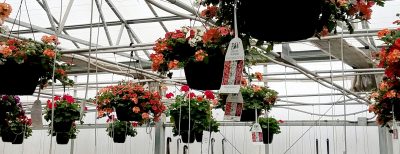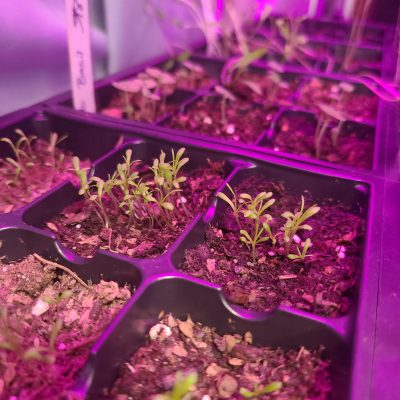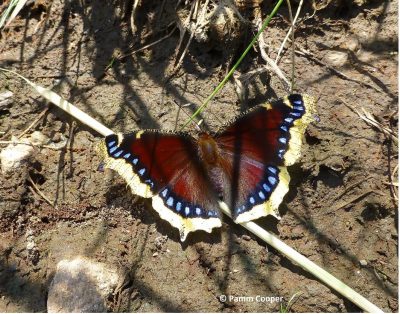
"Anyone who thinks that gardening begins in the spring and ends in the fall is missing the best part of the whole year; for gardening begins in January with the dream"
— Josephine Neuse
Time to Start Seed Shopping

As gardeners settle in for the winter and begin to peruse the pile of seed catalogs, there are many things to consider. Picture books full of vibrant new fruits, vegetables and flowers can tempt us to try something new, while some gardeners have their annual seed order down to a science.
Here are a few things to consider when selecting seed varieties for your garden:
- History of pests, disease, and even environmental conditions in your garden
- What you plan to use the end product for:
- Some varieties of vegetables are better for long term storage, while others are best enjoyed fresh after harvest.
- If selecting flowers for cutting, go with long stem or taller varieties
- Days to maturity/harvest can determine how long your growing season will be for a specific crop. Selecting types with a shorter growing season may allow for a second planting, while selecting longer season varieties may fit your gardening practices better.
Heirloom or Hybrid?
It's a gardening debate that spans generations. As new varieties are introduced, and others continue to hold true - many find themselves asking "Which is best?"and the answer is not always so cut and dry.
Hybrid varieties are often quick to boast disease or environmental tolerance and great production rates. While heirlooms claim to be tried and true and bring more genetic diversity to your garden. In addition, not all seeds are meant to be harvested and saved for the next growing season, so it's important to know what you've planted to continue a successful garden in future seasons.
Take your gardening needs into consideration when selecting seeds. Heirloom tomatoes, for example, are great in the home garden - but hybridized patio tomatoes may be better suited for condo or apartment living. Look at the traits of the specific variety beyond whether they are heirloom or hybrid to see if the variety will meet your goals in the garden and pantry.
Helping Houseplants Through the Winter

Many people out there bring in or adopt new houseplants during the winter to help them through the winter blues. It can be a delicate time of year for these plants as many are tropical and enjoy warmer environments.
Common mistakes:
- Under watering - It can be a challenge to remember to water your house plants. We are all much more aware of hydration (for ourselves as well as our plants) during warmer months, but can often forget when it is cooler and our plants seem to "pause" growth.
- Overwatering - When we haven't watered in what feels like a long time (to us), many of us will "add some extra" water in an attempt to love or help a struggling plant. This can do more harm than good.
- Not Scouting - Houseplants are far from "set it and forget it" for the winter season. Oftentimes, pest problems seem to come out of nowhere when regular check ins are not practiced. Look at the overall health of the plant when you are watering and when you walk by.
Word from the WiSE
This month, UConn’s Women in Soil Ecology bring you a word on indoor gardening for winter time: Nutrient packed, easy-to-grow microgreens.
Microgreens can be grown from many types of seeds, including herbs, flowers, and vegetables. Radish and arugula are spicy and easy to grow. If you are feeling adventurous, try mizuna or shiso. Feeling festive? Try flower sprouts like marigold, celosia, or sunflowers. Beginners can try daikon radish or basil. Daikon grow rapidly, ready to harvest within a week. Basil is tender and fragrant and takes about 14 days to go from sprout to harvest.
Growing microgreens at home is a simple way to add more nutrients to your diet. If you don’t have greenhouse trays at home, you can either buy a kit, or even substitute in upcycled aluminum to-go containers or catering dishes from the holidays. All you need are some seeds, potting mix, water, and a few trays to grow in. Wait until sprouts are a few inches tall, then grab a bunch and cut them near the soil with scissors. Add them to soups and salads and enjoy fresh sprouts all winter!
By Julie-Ann Adorno – Soil Science Masters Student, UConn PSLA
Knowledge to Grow On

Read our Ladybug blogs written weekly:
Preparing for the Growing Season Ahead in 2025
Upcoming Events and Things to Do
- Check out one of CT's many recreational areas for skiing, snowboarding and snow tubing
- Steve Cryan's 31st Annual Train Show, November 21-February 16, Essex CT
- Find something to please everyone in the family with 35 Things to Do in CT this January!
- Winter Festival 2025 - February 1, 2025, Torrington CT
Educational Opportunities & Workshops
- Attend A Local Garden Club meeting, talk, or workshop
- 2025 Arborist Exam Prep Course - Wednesdays January 8, 2025, through April 2, 2025, Stamford CT
- Gardening Workshop: Seed Starting - January 11, New Canaan CT
- Gardening Workshop Series: Winter Sowing- January 18, West Hartford CT
CT Flower & Garden Show 2025
The UConn Home & Garden Education Center will have our booth at the CT Flower Show this year! Come and say hello to our Plant & Soil Health Staff and Master Gardener Volunteers!

- Thursday 2/20 - 11:00 AM
- Al's Top Secret Compost Recipe
- Alastair Ong, Esq., UConn Master Composter
- Al's Top Secret Compost Recipe
- Friday 2/21 - 12:30 PM
- Look at Interesting Connecticut Lichens and Slime Molds
- Pamm Cooper, UConn Home & Garden Education Center
- Look at Interesting Connecticut Lichens and Slime Molds
- Saturday 2/22 - 12:30 PM
- Learning to Speak Horticulture
- Heather Zidack, UConn Home & Garden Education Center
- Learning to Speak Horticulture
- Sunday 2/23 - 11:00 AM
- Be a Plant P.I. Learn to Detect, Identify and Prevent Plant Diseases
- Dr. Nick Goltz, UConn Plant Diagnostic Lab
- Be a Plant P.I. Learn to Detect, Identify and Prevent Plant Diseases
January Gardening Tips
- Check for frost heaving on perennials during thaws and press back into place. Cover the crowns with extra mulch as necessary.
- Inspect stored bulbs, tubers and corms for rot or infestation. Discard those showing signs of decay or insect damage.
- Houseplants with large leaves and smooth foliage such as philodendrons, dracaena and rubber plant benefit if their leaves are washed at intervals to remove dust and grime, helping keep the leaf pores open.
- Check all house plants closely for insect infestations. Quarantine gift plants until you determine that they are not harboring any pests. Inspect under leaves for infestations of whitefly and spider mites; check between leaves and stems for white, cottony mealybugs, and look under leaves and on stems for scale insects. Apply insecticidal soap or another low toxicity insecticide, crush or brush off as appropriate.
- To determine how many seeds to order, map out your garden on graph paper, allowing adequate space between rows and ample room for vining crops such as pumpkins and winter squash.
- At month's end, start seeds of onions, leeks, broccoli, cabbage, and cauliflower indoors under lights.
- Brush snow from evergreens as soon as possible after a storm. Use a broom in an upward, sweeping motion. Serious damage may be caused by heavy snow or ice accumulating on the branches.
- When you are finished with holiday evergreen boughs, use them to mulch tender perennials and shrubs.
- If you have a real Christmas tree, recycle it after the holidays are through. Cut off branches and use as insulation over perennials. In spring, chip or shred branches to create mulch or add to the compost pile.
- To control bagworm on shrubs and trees, look for the small stick-covered 'bags' and remove by hand.
- Clean bird feeders and baths regularly to avoid the spread of avian diseases. Disinfect feeders and baths monthly with a solution of 1-part bleach to 9-parts water. Clean droppings off and make sure the bird food isn’t moldy.
This Month’s Newsletter Contributors:
Heather Zidack, Julie-Ann Adorno






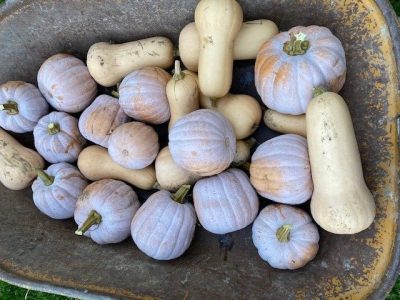


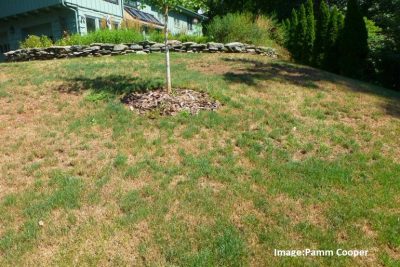


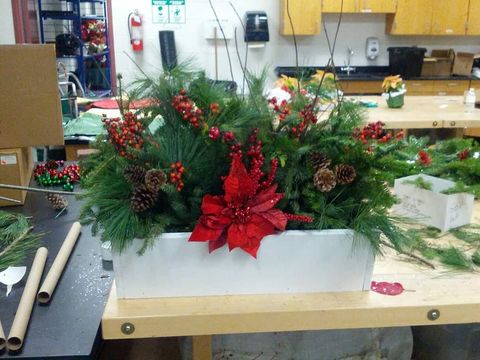

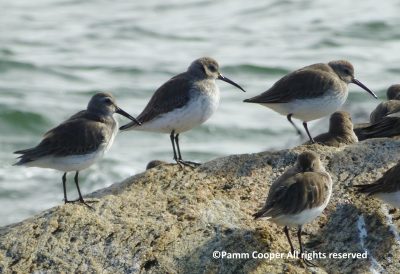






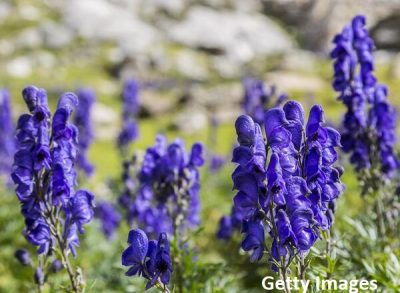






 Native goldenrods (Solidago spp.) provide nectar and pollen for diverse species of insects and seeds for birds and small mammals. Different species bloom from August- late September or even into October, when other native plants are past bloom time. They are important sources of energy for migrating butterflies and for bees that are active late in the season.
Native goldenrods (Solidago spp.) provide nectar and pollen for diverse species of insects and seeds for birds and small mammals. Different species bloom from August- late September or even into October, when other native plants are past bloom time. They are important sources of energy for migrating butterflies and for bees that are active late in the season.




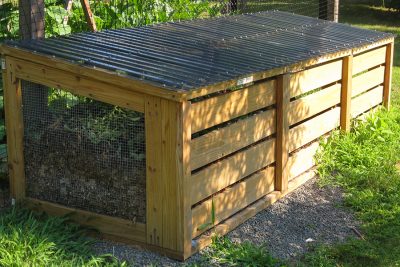










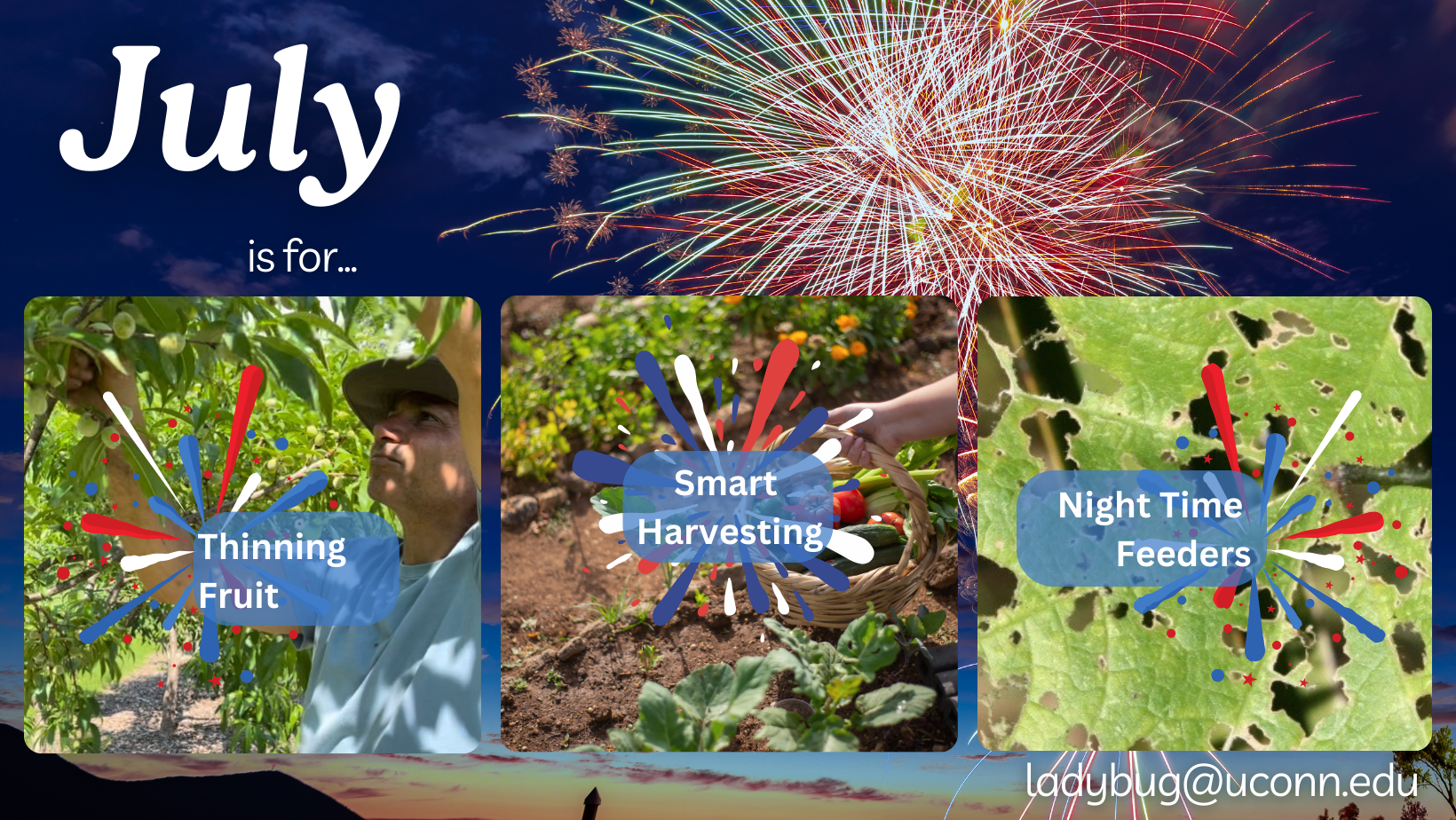









 Closely monitor for Squash Vine Borer and Squash bugs on your cucurbits!
Closely monitor for Squash Vine Borer and Squash bugs on your cucurbits!
















